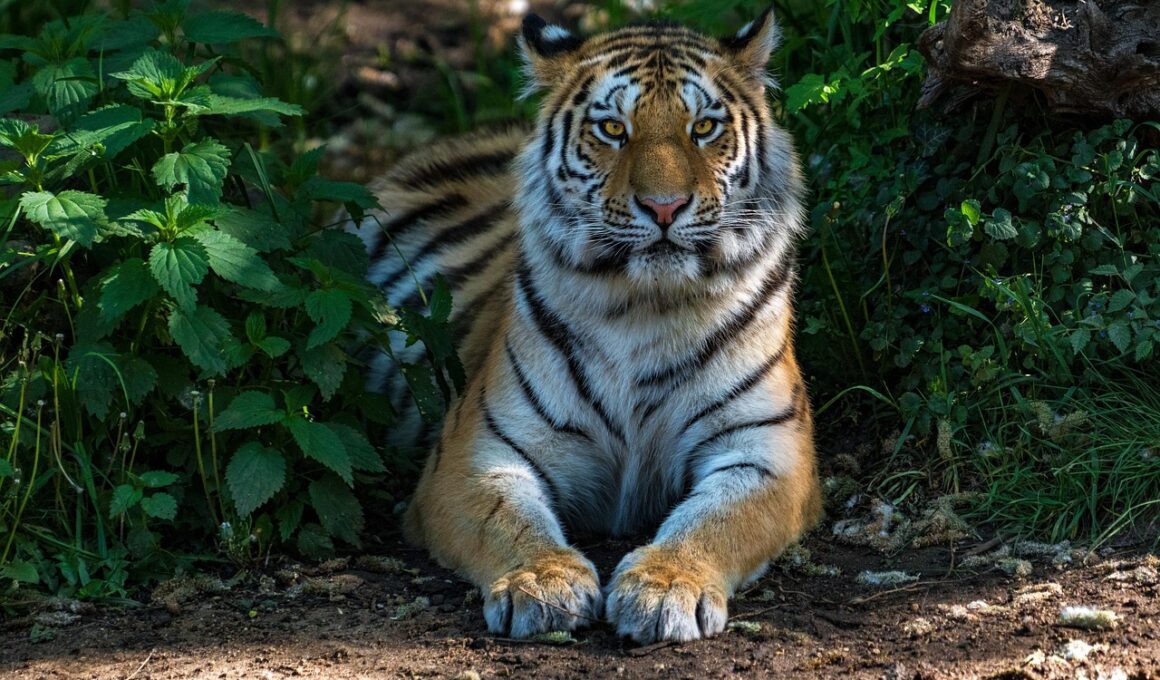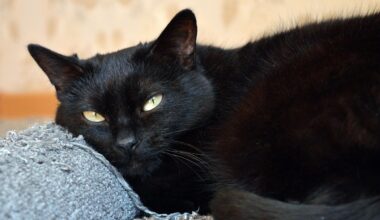Understanding the Different Types of Aggressive Behavior in Cats
Aggression in cats can manifest in various ways, especially in multi-pet households. These behaviors often stem from territorial disputes, fear, or social hierarchies established among pets. Understanding the motivations behind cat aggression is crucial for owners to prevent escalating issues that may lead to injuries or stress within the household. Cats may display aggression due to fear or anxiety, feeling threatened by the presence of another animal. This defensive aggression is often a reaction to perceived invaders, as cats are territorial by nature. Another type is play aggression, which usually occurs in younger cats. They often engage in rough play that can inadvertently escalate into more serious aggression if not managed properly. Conflicts can arise during feeding times, toys, and resting spots, causing competition among pets. Also, aggressive behaviors might be more pronounced in males, particularly if they are unneutered. Solutions typically involve gradual introductions, providing separate resources for each pet, and behavioral training techniques. Additionally, consulting with a veterinarian or animal behaviorist will offer valuable insights into addressing these aggressive tendencies effectively, enhancing the overall compatibility among cats.
It is vital for owners to identify the triggers of aggressive behaviors in cats. Recognizing signs of aggression, including growling, hissing, or swatting, allows for timely interventions. Cats may act out when feeling threatened, so understanding their body language is essential. Ears back, stiff tails, and dilated pupils indicate agitation, providing crucial clues. Aggression can often be mitigated through environmental adjustments. Offering multiple resting spots, hiding places, and vertical spaces can help reduce tensions among cats. Furthermore, interactive toys can facilitate mental stimulation and redirect energy away from aggression. If aggression escalates, separating the involved cats may become necessary for safety. This separation allows time for cats to calm down while allowing owners to assess the situation. Owners should observe and document the aggressive incidents, noting their context and duration. This record can assist professionals in developing effective behavior modification plans. As each cat is unique, tailored strategies are imperative to address their individual behaviors and establish a harmonious living environment. Consistency in training practices, coupled with patience, will enhance the likelihood of success in reducing aggression in multi-pet homes.
Types of Aggression in Cats
Different types of aggression can appear in cats, making understanding their distinction important for owners. One common type is territorial aggression, which occurs when a cat feels its territory is being threatened by another animal. This behavior typically manifests in hissing, growling, or assertive postures. Additionally, fear-induced aggression arises when cats perceive a threat from their environment or other pets, leading them to react defensively. This form of aggression may result from past trauma or negative experiences with other animals. Another notable type is redirected aggression, which happens when a cat cannot reach the source of its frustration, such as seeing another cat outside. Consequently, it may direct its aggression towards a nearby pet or even its owner, leading to unexpected attacks. Status-related aggression is often seen in multi-pet households where one cat assumes a dominant role. Understanding these types of aggression can help owners identify specific behaviors and take steps to manage them effectively. Additionally, providing a calm environment and ensuring each pet feels safe can greatly reduce the likelihood of aggressive incidents occurring.
Addressing aggression in multi-pet households takes consistency and understanding. Behavior modification can involve establishing clear rules and boundaries within the home, allowing cats to feel secure and reducing competition. Introducing designated feeding stations, litter boxes, and cozy resting areas can minimize territorial disputes among pets. Owners should aim to establish a routine that fosters calmness and wellness. Regular playtime and engaging activities can alleviate excess energy that may lead to aggressive behaviors. Gradually introducing new pets to the household, allowing them to acclimate through supervised interactions, can prevent aggressive outbursts as well. When two unfamiliar cats meet, providing them with separate spaces initially will give them time to adjust to each other’s scents before direct contact. By allowing time to establish relationships, owners can significantly reduce aggression and foster a peaceful environment. Additionally, monitoring cat behavior during this integration period is crucial for intervention if necessary. An understanding of environmental stressors and proactive measures can also support this process, creating a thriving and harmonious multi-pet household.
Signs of Aggressive Behavior
Recognizing the signs of aggressive behavior in cats helps prevent escalations that might lead to serious conflicts. Common indicators include vocalizations such as yowling, growling, or hissing, alerting owners to a pet’s distress. Physical cues are also prevalent—cats might arch their backs, puff up their fur, or show their teeth when threatened. Additionally, a cat will often postures itself in ways to signal discomfort or aggression, such as adopting a sideways position, ready for a fight or retreat. Scratching or swatting at other animals can also signify aggression. Understanding body language is indispensable for responding appropriately to aggression. A cat displaying a flat ear position, dilated pupils, or a stiff tail signifies agitation and a need for space. Establishing a calm presence is crucial in these situations, as cat owners should remain calm and avoid sudden movements. Providing space and, if necessary, transitioning to a separate room or area for the aggressive cat allows it to regain composure. Using calming aids such as pheromones or interactive toys can significantly reduce stress levels and aggression.
Management strategies for aggressive behavior must focus on understanding each cat’s needs and engaging in proactive responses. Providing separate resources for food, water, and litter boxes can help alleviate resource competition, reducing aggressive incidents. Behavioral training sessions conducted in short bursts can reinforce positive interactions among pets. Positive reinforcement techniques, such as rewarding cats with treats or praise, will encourage desired behaviors over aggressive ones. Additionally, ensuring that each cat has access to safe zones or places to retreat creates a sense of security. Veterinary advice may come in handy when aggression patterns persist, as underlying health issues can contribute to behavioral changes. Conditions such as pain, hormonal imbalances, or anxiety may trigger aggressive tendencies, and addressing these factors could alleviate severe aggression. Consulting with a feline behaviorist may further assist in developing a tailored plan to increase harmony in multi-pet households. Owners should constantly monitor pet interactions and stay vigilant to cat behavior changes, as these can indicate the need for immediate intervention. With time and attention to these details, peaceful relationships among cats can be established.
Conclusion: Promoting Harmony Among Pets
Creating a peaceful coexistence among multiple cats can be achieved through diligence and understanding. An essential approach involves understanding that aggressive behaviors stem from underlying motivations, thus necessitating tailored interventions. Owners should remain committed to integrating each cat’s individual needs and personality traits into management strategies. Regular check-ins with a veterinarian or behaviorist will keep an open line of communication, ensuring that any emerging issues can be addressed promptly. Creating an enriching environment with ample stimulation, safe spaces, and consistent routines allows cats to thrive together. Play sessions, puzzle toys, and interactive engagement can reduce boredom while encouraging positive behaviors. Furthermore, supporting each cat’s unique tendencies, preferences, and social interactions nurtures confidence and security. Consistent reinforcement of appropriate behaviors will yield fruitful results over time, leading to fewer aggressive incidents. Ultimately, fostering patience, understanding, and love will play integral roles in achieving a harmonious multi-pet household. By prioritizing the well-being of each furry companion and maintaining attentive observation, cat owners can ensure a peaceful atmosphere where all pets feel secure and respected.
By nurturing a greater understanding of aggression styles and motivation, cat owners can create cooperative households. Developing strategies tailored to each cat’s specific behavior patterns requires dedication and effort, but the rewards are immense. Cats will flourish in an environment where they feel secure, reinforcing positive relationships among pets. Utilizing methods like gradual introductions for new pets and providing environmental enrichment will set the foundation for lasting harmony. Regularly engaging in play and interactive experiences will promote companionship and minimize instances of aggression. Owners embracing these tactics will not only alleviate immediate concerns but also prevent future conflicts. Seeking expert advice is crucial, as addressing health-related concerns and behavioral patterns can help guide appropriate interventions. Patience in understanding feline dynamics is required when navigating relationships among multiple pets. Owners should remain observant of changes in behavior, adapting strategies as necessary to suit the diverse personalities within their household. Working together will foster emotional bonds among pets, transforming a multi-pet household into a loving and supportive environment. Ultimately, the journey towards managing aggression is invested in respect and care for each cat, leading to a joyful community.


